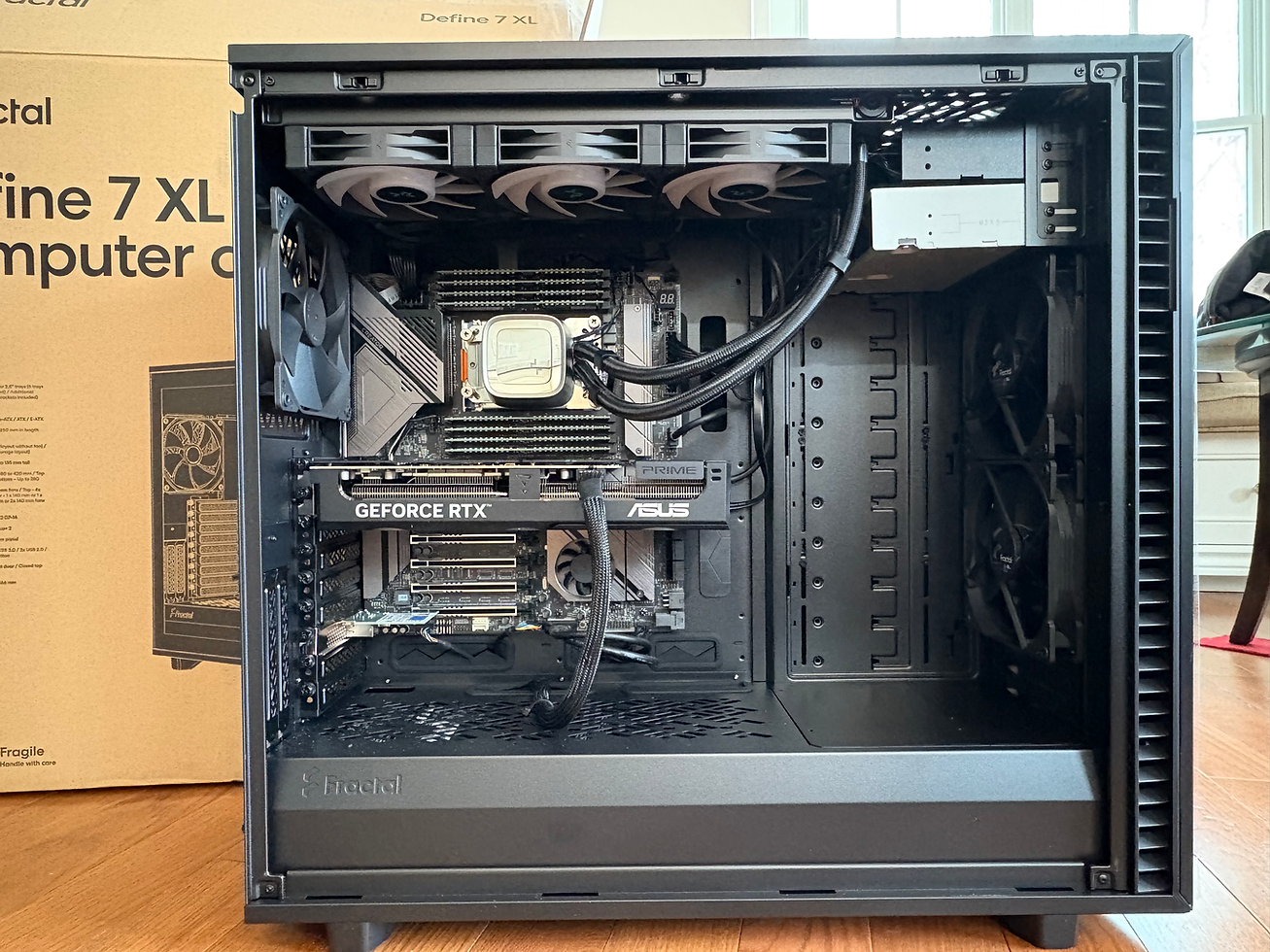
Benchmarking Your Forensic Workstation: How Fast Is Fast Enough?
- John Bifolchi
- Feb 26
- 4 min read
When you’re knee-deep in a case, waiting for your workstation to finish imaging a drive or crunching through hashes can feel like watching paint dry. But how do you know if your system is actually underperforming—or if it’s just the nature of the beast? Benchmarking your forensic workstation isn’t just about bragging rights; it’s about ensuring your tools keep pace with the demands of modern investigations. In this post, we’ll break down how to measure your system’s performance, interpret the results, and pinpoint upgrades that can shave hours off your casework.
#### Why Benchmarking Matters
Digital evidence isn’t getting smaller. With terabyte drives and complex file systems now routine, a sluggish workstation can bottleneck your workflow. By benchmarking, you quantify what your rig can handle—whether it’s imaging speed, hash computation, or indexing—and spot where it’s falling short. The goal? Work smarter, not harder.
#### Key Metrics to Measure
Here’s what to focus on when testing your forensic workstation:
- Imaging Speed (GB/min): How fast can your system create a forensic image? This depends on your storage, CPU, and software efficiency.
- Hash Computation (MD5/SHA-1): Verifying integrity is non-negotiable. How quickly can your system generate hashes for a massive dataset?
- File Indexing Times: Searching and analyzing evidence often starts with indexing. A slow index can delay everything else.
These metrics directly impact case deadlines, so they’re your starting line.
#### Tools to Get Started
You don’t need a PhD in computer science to benchmark—just the right tools. Here are some free and forensic-friendly options:
- CrystalDiskMark: A go-to for testing raw storage speed (sequential read/write rates). Perfect for checking your drives.
- PassMark PerformanceTest: A broader system benchmark that scores CPU, memory, and disk performance.
- FTK Imager: Already a staple for many examiners, it logs imaging throughput—use it to measure real-world forensic tasks.
For a forensic-specific spin, you can also script hash calculations in tools like X-Ways or Autopsy and time the results. (More on that below.)
#### Interpreting Results: What’s “Good”?
Numbers are meaningless without context. Here’s a rough guide based on typical forensic workloads:
- Imaging Speed: A solid workstation should image at 4–8 GB/min (e.g., a 1TB drive in 2–4 hours). High-end setups can push 10+ GB/min.
- Hashing: Expect 5–10 GB/min for MD5/SHA-1 on a mid-tier system. Top-tier rigs with multi-threading can double that.
- Indexing: A 500GB drive with mixed file types should index in 1–2 hours on a decent setup.
If you’re lagging—like imaging a 1TB drive in 6+ hours—it’s time to investigate bottlenecks.
#### Upgrade Impact: Real-World Gains
Throwing money at hardware doesn’t always help, so let’s look at upgrades that actually move the needle:
- Doubling RAM (e.g., 16GB to 32GB): Speeds up indexing and multitasking—think 20–30% faster on large datasets.
- Switching to NVMe SSDs: Boosts imaging and file access speeds by 3–5x over traditional SATA SSDs or HDDs.
- CPU Boost: More cores/threads can cut hash times significantly (e.g., 25–50% faster on parallel tasks).
For example, swapping a SATA SSD for an NVMe drive might drop a 1TB imaging job from 3 hours to under 1. That’s a game-changer mid-case.
#### Sample Results: Mid-Tier vs. High-End
To illustrate, here’s how two anonymized setups compare:
- Mid-Tier (i7-9700, 16GB RAM, SATA SSD):
- Imaging: 5 GB/min (1TB in ~3.3 hours)
- Hashing: 6 GB/min
- Indexing: 500GB in 1.8 hours
- High-End (Ryzen 9 5900X, 64GB RAM, NVMe SSD):
- Imaging: 12 GB/min (1TB in ~1.4 hours)
- Hashing: 15 GB/min
- Indexing: 500GB in 0.9 hours
The high-end system cuts times nearly in half—worth it if your caseload justifies the cost.
#### Step-by-Step: Benchmark Like a Pro
Ready to test your own workstation? Follow this examiner-friendly tutorial:
1. Prep Your System: Close unnecessary apps. Use a test drive (e.g., a 500GB image) to standardize results.
2. Test Imaging: Fire up FTK Imager, image your test drive to a fast target (like an NVMe), and note the GB/min rate.
3. Measure Hashing: Generate MD5 and SHA-1 hashes for the same image. Time it manually or check tool logs.
4. Run Indexing: Use your go-to forensic suite (e.g., Autopsy) to index the image. Record start/end times.
5. Log Results: Track everything in a simple spreadsheet. (Download our free template [here](#)—we’ve included sample scripts for hashing too!)
Repeat quarterly or after upgrades to spot trends.
#### Final Thoughts
Speed isn’t everything in forensics—accuracy and reliability reign supreme—but a sluggish workstation can grind your process to a halt. Benchmarking gives you hard data to justify upgrades (or prove your current setup’s still got it). So, grab those tools, run the numbers, and see where you stand. How fast is fast enough? For you, it’s whatever keeps the evidence flowing and the cases closing.
Have questions or want to share your benchmarks? Drop us a line—we’d love to hear from the trenches.



